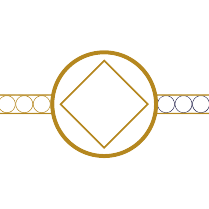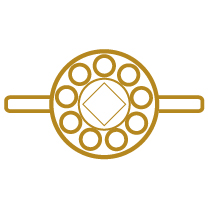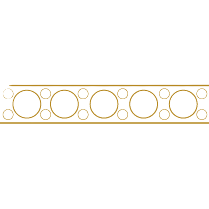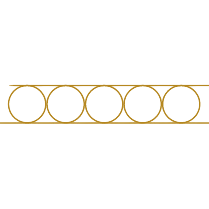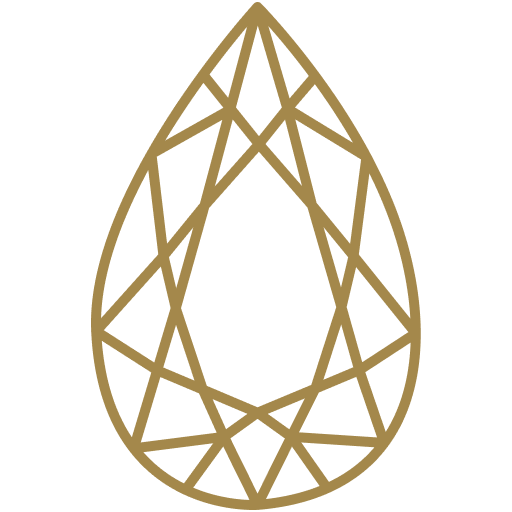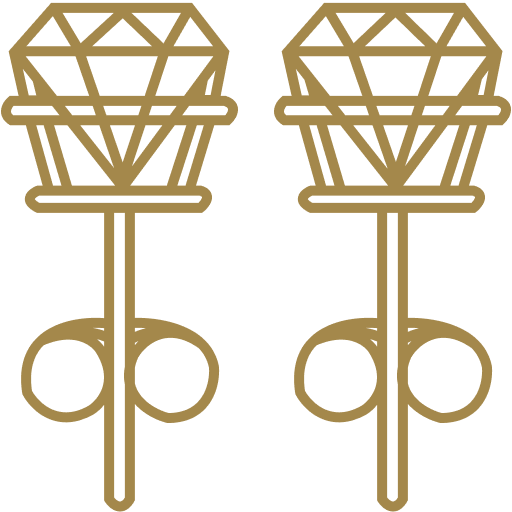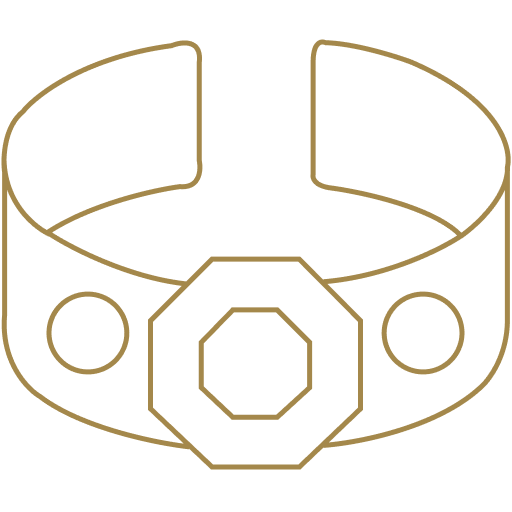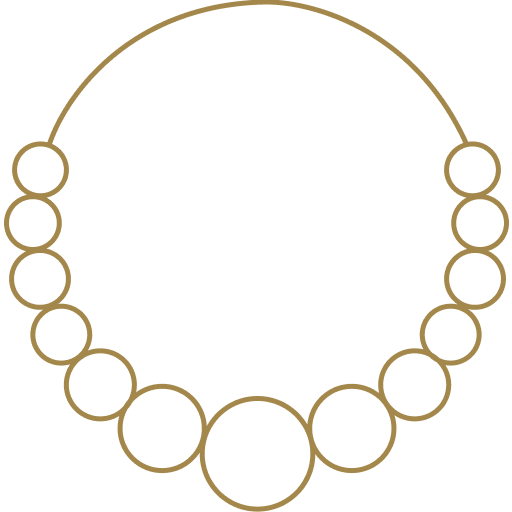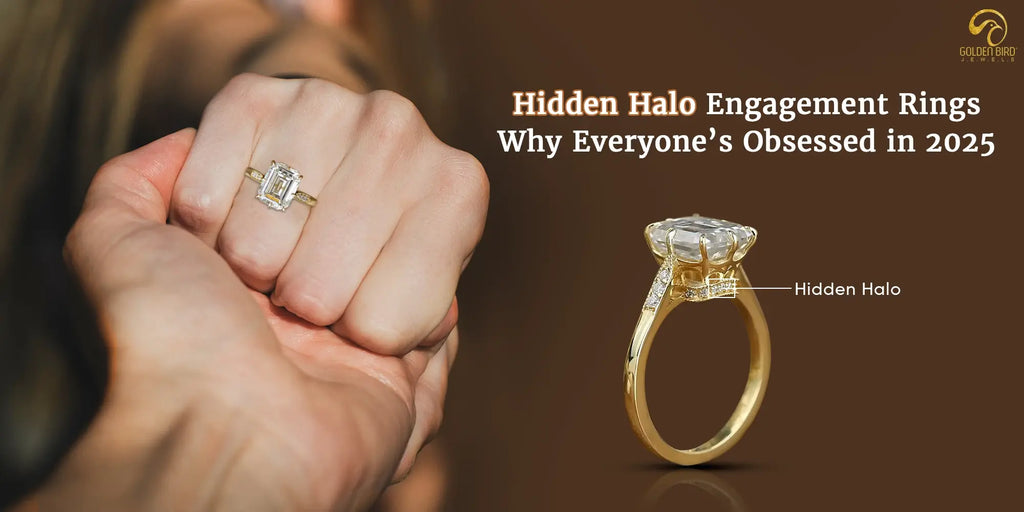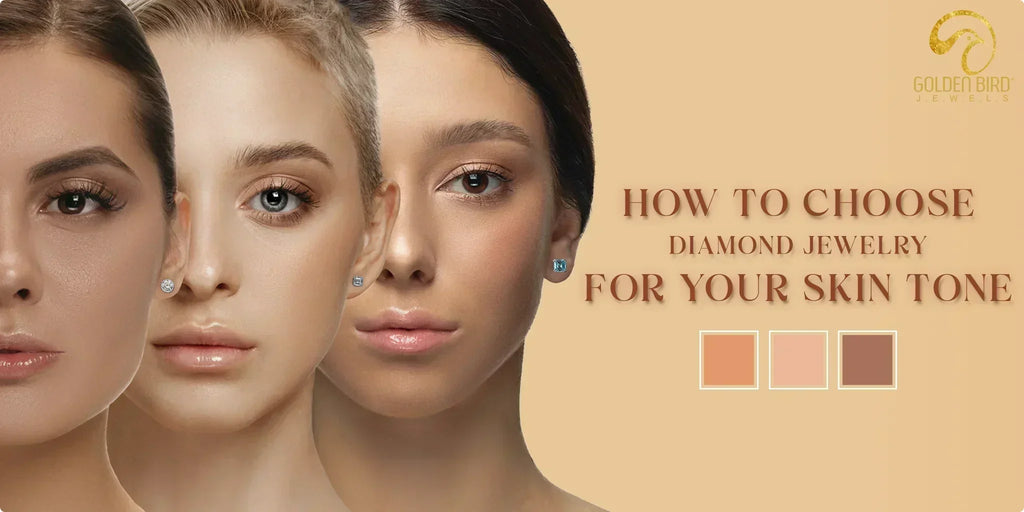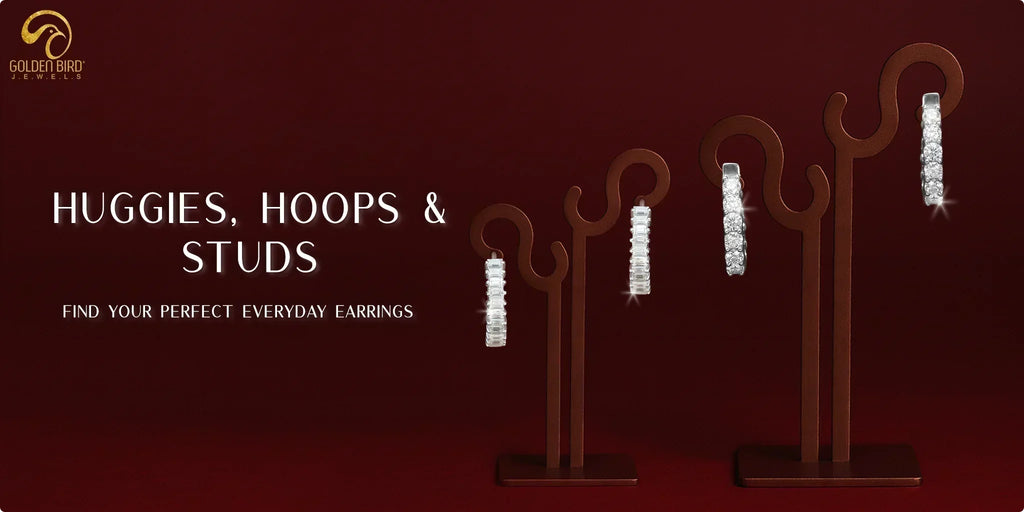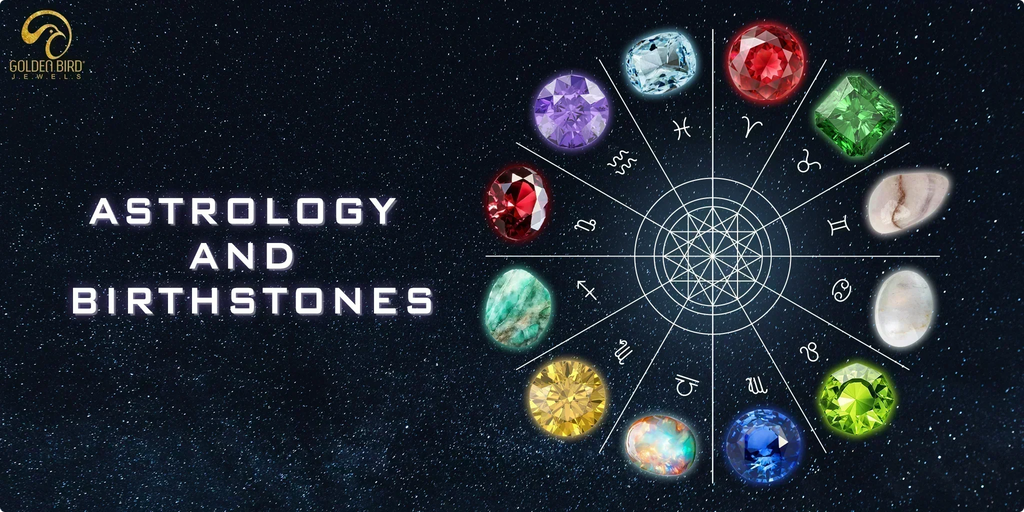The Rise of Sustainable and Ethical Jewelry: A Modern Consumer's Guide

Jewelry has always been a symbol. A marker of love, success, and identity. It tells a story whether you mean for it to or not.
Lately, that story has changed.
The days of buying based on shine alone are fading. More people are asking questions: Who made this? Where did the gold come from? What happens after I buy it? Because in a world where you have so many options to choose from, the final product you buy actually means something.
Sustainable and ethical jewelry is about making intentional choices by honoring craftsmanship, respecting resources, and upholding better values. You should stand for jewelry made with care, by people who care.
The next time you’re picking some fine jewelry pieces, think beyond the sparkle.
Why Small, Intentional Brands Are Leading the Way
Big jewelry brands move slowly. They’re based on tradition, exclusivity, and a supply chain that’s changed little over the decades. The problem? The world has shifted. Consumers now ask smarter questions, demand transparency, and expect sustainability to be more than a marketing gimmick.
The future of fine jewelry is being shaped by small, intentional brands that ponder upon what is sustainable jewelry.
1. Agility Over Legacy
Legacy brands are like massive ships—difficult to steer, slow to adapt. They wait until sustainability is unavoidable. Meanwhile, smaller brands are already innovating—choosing lab-grown diamonds, using recycled metals, and working directly with artisans who are fairly paid to make ethical jewelry.
Smaller brands don’t wait for industry approval. They build new standards from the ground up.
2. Transparency is Their Advantage
Large corporations protect their supply chains like secrets. Independent brands? They share the full story.
-
Where their materials come from
-
Who makes their jewelry
-
What impact their production has on the environment
Consumers trust brands that don’t hide behind just plain marketing.
3. Quality Over Mass Production
The big players chase trends and volume—producing thousands of identical pieces. Small, intentional brands — such as Golden Bird Jewels — focus on craftsmanship, uniqueness, and longevity.
They create jewelry that isn’t disposable but intended to be kept and cherished. Such ethical jewelry can be passed down through generations with pride.
The future belongs to the bold. It does not belong to the brands with the biggest marketing budgets but to those with a clear purpose, sustainable vision, and deep respect for both people and the planet.
And those are the brands that will last.
The Shift To Sustainability: Why Consumers are Demanding More
For a long time, buying jewelry was simple. See something beautiful. Buy it. Wear it.
But today, simplicity looks different. People aren’t just picking jewelry based on aesthetics they’re choosing based on values. They want to know who made it, how it was made, and what impact it leaves behind.
It’s not because they have to. It’s because they can.
Information is everywhere. A quick search can tell you where that diamond came from and how gold mining affects the environment. You can also tell if a brand is really ethical or just marketing itself that way. Consumers aren’t just shopping anymore; they are making informed decisions in line with what they believe. The purpose of ethical jewelry is to promote a more responsible industry.
The question is no longer What looks good? The question is: What do I want to support?
What Makes Jewelry Sustainable and Ethical?

The words sustainable and ethical are everywhere. Brands use them for advertisement. But what do they actually mean when it comes to jewelry?
Let’s break it down.
Sustainability in jewelry means minimizing the damage and maximizing the life out of what is created to keep planet resources intact. Here’s how:
-
Recycled Precious Metals: Traditional precious metals such as gold and silver do not lose quality through recycling. Today, many jewelers are not mining new materials but are actually reusing existing metals to create ethical jewelry.
-
Lab-Grown Diamonds: These aren’t fake. They’re chemically identical to mined diamonds, just created in a controlled environment without the deep pits, water waste, and questionable labor practices.
-
Responsibly Sourced Gemstones: Mining doesn’t have to be exploitative. Ethical sourcing means knowing where the stones come from and ensuring fair labor conditions.
Sustainability is about conscious creation. Less mass production, more thoughtful craftsmanship. Less waste, more value.
Jewelry is not dug out of the earth and popped into a gift box; rather, it’s mined by people, made by artisans, and designed by designers. Ethical jewelry USA ensures ethical treatment: fair conditions, safety, and a living wage for the hard working people who make the jewelry.
Here’s what that looks like:
Fair Trade & Transparency: Ethical brands would have shared the details of where they source from. Probably, safe working conditions accompanied by fair pay for whoever the suppliers are. No secret, no hidden exploitation.
Small-Batch & Handcrafted: Instead of mass factory production under poor working conditions, many ethical jewelry brands tend to be artisan-led and small in scale. That means good craftsmanship, better quality, and direct support for the artisans themselves.
Conflict-Free Diamonds & Gemstones: Some diamonds and gemstones come from areas where conflicts and unethical labor practices are prevalent. Ethical jewelry makes sure that the stones come from areas and suppliers boasting due regard for human rights.
Fine jewelry represents the energy from which it has originated and who has made it. Ethical choices ensure that energy is one of respect and dignity.
How to Spot Greenwashing in the Jewelry Industry
Not every brand that markets itself as sustainable really is. Some just throw around buzzwords—eco-friendly, ethical, conflict-free—but don't back it up. That’s greenwashing: making something seem more responsible than it actually is.
Here’s how to spot it:
1. Vague or Overused Claims
If a company says “sustainable” or “ethical” without explaining how, be skeptical. True sustainability is specific. Look for brands that clearly state:
-
Where their materials come from
-
How they ensure fair wages and working conditions
-
What certifications or third-party verifications they have
2. No Proof of Sourcing
Transparency matters. Ethical brands proudly share their process—where their gold, diamonds, and gemstones originate. If a company avoids answering questions about sourcing, it’s a red flag.
3. Mass Production Disguised as “Handcrafted”

If a brand claims to be “artisanal” but sells thousands of identical pieces, something doesn’t add up. True craftsmanship takes time and skill.
4. Hidden Environmental Impact

Some brands talk a big game on sustainability but are still using newly mined gold and diamonds, which take a heavy toll on the environment. Find those that use recycled metals and lab-grown diamonds or with ethically sourced ones that can be verified.
Being a conscious consumer isn’t about perfection—it’s about asking the right questions because when a company really cares about sustainability, they’ll prove it with the right certifications.
The Role of Lab-Grown Diamonds in Shaping the Future
For decades, mined diamonds were the gold standard of fine jewelry. But times change. Consumers now ask questions that the traditional diamond industry struggles to answer. Where did this stone come from? Who mined it? What impact did it leave behind?
1. Science Meets Luxury
Lab-grown diamonds are not imitations. They are chemically, physically, and visually identical to mined diamonds. The only difference is where they come from. Instead of being ripped from the earth, they are made through technologies that almost exactly reproduce natural diamond formation—without the deep pits, immense water waste, or havoc.
Innovation is the voice of the future for fine jewelry, with lab-grown diamonds at the forefront.
2. A Clear, Ethical Choice
Unlike mined diamonds, lab-grown diamonds come with full transparency. No hidden supply chains. No uncertain labor conditions. No question of whether they contributed to environmental harm.
3. Sustainability Without Sacrificing Brilliance
Lab-grown diamonds eliminate the need for new mining and offer the same cutting edge of traditional forged ones with little or no impact, yet maintaining the radiance strength, and time-honored charisma. With advancing technology, they are made more affordable, and this fact proves that sustainability can go hand in hand with luxury.
The shift has begun. Forward-thinking jewelers and conscious consumers are already choosing lab-grown diamonds. This is the next frontier in fine jewelry not just in what shines, but what aligns with a better, smarter way forward.
And those who embrace it now? They’re ahead of the curve.
A Better Way: Investing in Jewelry That Matters

Jewelry is a commitment. A commitment to quality, to craftsmanship, and to something that lasts.
The problem? Too much jewelry today is designed for trends, not for time. Pieces that look good at the moment but don’t hold their value, in meaning or in make. That’s where real investment comes in choosing jewelry that’s designed with intention.
At Golden Bird Jewels, we think the future of fine jewelry should be beautiful and responsible. For this, we work on every piece with lab-grown diamonds that have been ethically created without any environmental toll or traces of uncertainty with traditional mining.
Why Golden Bird Jewels’ lab-grown diamonds? Because:
-
They’re chemically and physically identical to mined diamonds—just made with innovation instead of excavation.
-
They eliminate the guesswork—no concerns about origin, labor practices, or hidden conflicts.
-
They’re future-focused—sustainability and luxury can (and should) exist together.
This isn’t about compromise—it’s about progress. Lab diamonds offer a better way to wear fine jewelry. One that honors both craftsmanship and conscience.
Because when you invest in something made with care, it doesn’t just shine—it stands for a conscious choice to support a better future.
Conclusion
Every purchase is a decision. A vote for the kind of world you want to live in.
Jewelry has always carried meaning. But now, it carries responsibility, too. With so many choices, the question isn’t just What looks good? It’s What do I want to support?
The future of fine jewelry is already here. Lab-grown diamonds, sustainable craftsmanship, and ethical sourcing are the new standard. And the brands that embrace them? They’re shaping what comes next.
You get to decide what kind of jewelry belongs in your collection. The kind that’s built to last. The kind that aligns with what you believe in.
If you’re ready to choose sustainable jewelry brands with meaning, Golden Bird Jewels is here. Not just to sell you something, but to offer you a piece of the future—one that’s brilliant in every way.
The question isn’t whether jewelry is changing. It already has.
The only question left is: What will you wear next?
FAQs
What does ethical and sustainable jewelry look like?
Sustainable jewelry contributes to less pollution and waste. It encourages moral behavior and contributes to the equitable treatment of those who create your jewelry. While sustainable jewelry has a contemporary and playful edge, it is just as fashionable as traditional jewelry.
What makes a brand ethical and sustainable?
Ethical brands do not harm the environment, animals, or people in any way. They consider how the people and environment around them are affected by their products, including the manufacturing and production processes. In general, they want to make a sustainable and responsible contribution to society.
What is the most sustainable jewelry?
For consumers who care about the environment, recycled gold and silver and ethically mined platinum and palladium are all great options. You will appreciate lovely, eco-friendly jewelry that is consistent with your values by making wise choices and buying from ethical companies.
What is the most ethical gem?
A lab-grown diamond is, without a doubt, the most moral stone to give to your special someone. However, not all lab-grown diamonds are made equal, so it's important to pick one that is produced in a sustainable manner.
What makes jewelry high quality?
High-quality jewelry will have a feature known as a "hallmark." This symbol denotes a particular quality of metal used in its creation. This helps in authenticating the piece's worth.










